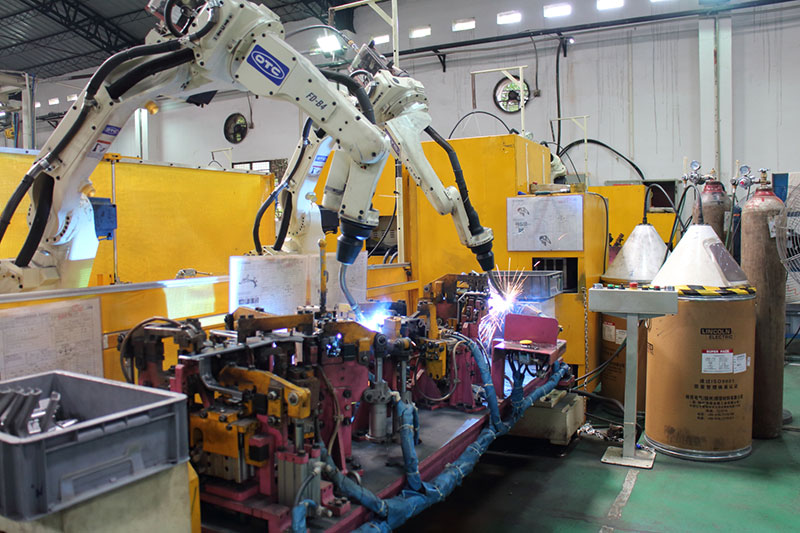Robot welding refers to the use of automated robotic systems to perform welding operations. These systems are equipped with welding arms or manipulators that can precisely control the welding torch to join metal parts together. Here are some key aspects of robot welding:
1. Automation and Precision: Robots in welding offer high levels of automation, capable of performing repetitive welding tasks with consistent precision. This consistency is crucial for maintaining weld quality and ensuring uniformity across production batches.
2. Versatility: Robot welding systems can be programmed to weld different types of joints and work with various materials, including steel, aluminum, and other alloys. They are adaptable to different welding techniques such as MIG (Metal Inert Gas), TIG (Tungsten Inert Gas), and spot welding.
3. Efficiency and Speed: Robots can work continuously without fatigue, leading to increased productivity and faster cycle times compared to manual welding. This efficiency can translate into cost savings and higher output for manufacturing operations.
4. Quality Control: Automation reduces the likelihood of human error in welding, leading to improved weld quality and consistency. Robots can also integrate sensors for real-time monitoring, ensuring that welds meet specified standards and tolerances.
5. Safety: Robot welding enhances workplace safety by reducing the exposure of human welders to hazardous fumes, intense heat, and repetitive strain injuries. Safety protocols are built into robotic systems to prevent accidents and ensure safe operation in industrial environments.
6. Programming and Flexibility: Programming robot welders involves teaching them specific paths and sequences for welding operations. Modern robots are equipped with intuitive interfaces that simplify programming and allow for quick reconfiguration to accommodate different production needs.
7. Integration with Manufacturing Systems: Robot welding systems can be integrated into larger manufacturing processes, including assembly lines and robotic cells. They can communicate with other machines and systems to optimize workflow and production efficiency.

Overall, robot welding offers significant advantages in terms of efficiency, quality, and safety in industrial manufacturing settings. It continues to evolve with advancements in robotics, AI, and sensor technologies, making it a cornerstone of modern manufacturing practices.
Advantages:
1) Stable and improved welding quality, able to reflect welding quality in numerical form;
2) Improve labor productivity;
3) Improve the labor intensity of workers and enable them to work in hazardous environments;
4) Reduced the requirements for worker operation skills;
5) Shortened the preparation cycle for product upgrades and reduced corresponding equipment investment.
Therefore, it has been widely applied in various industries.

